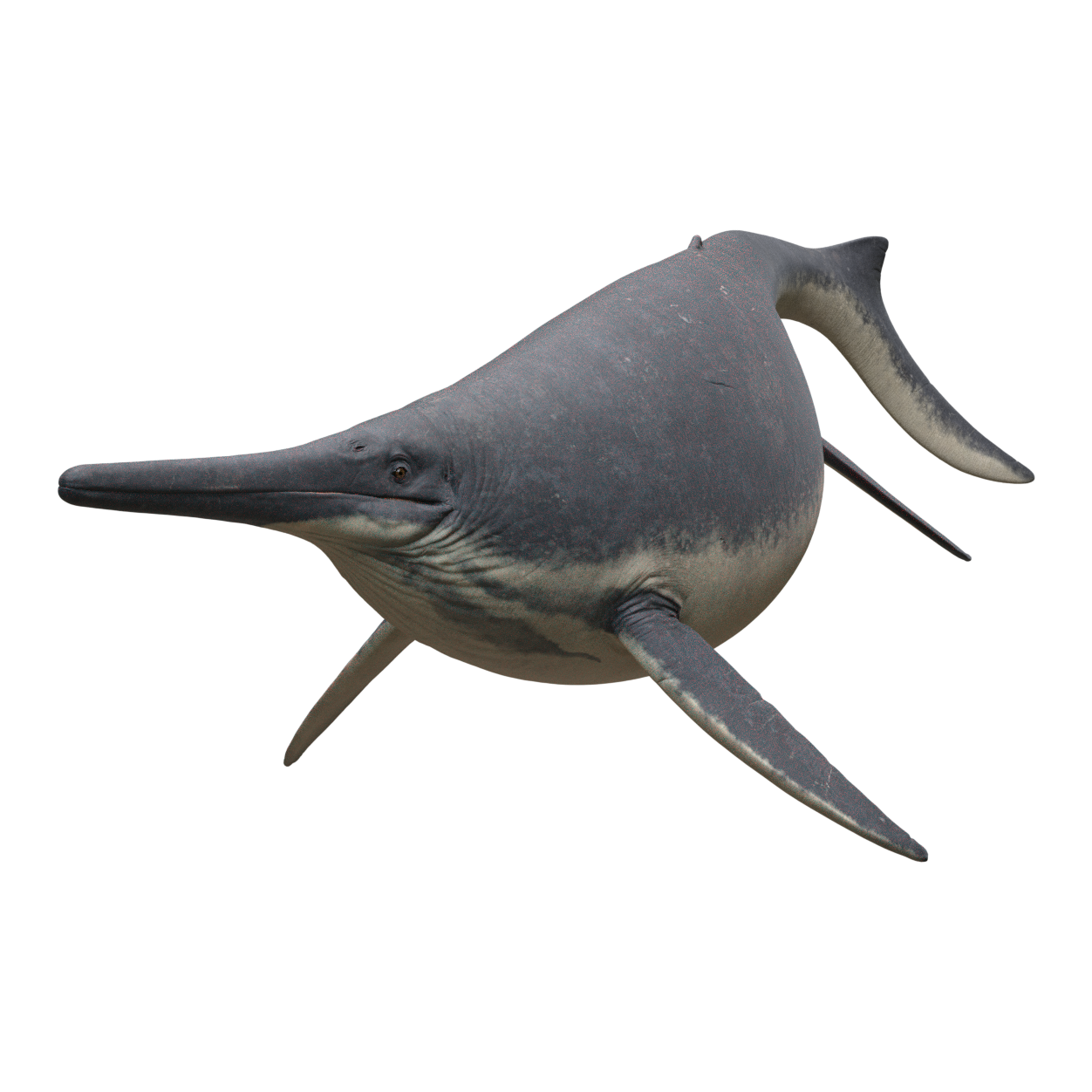The Reptilian Whales of the Triassic
Growing larger than some whales, this giant Triassic ichthyosaur, found in abundance in present-day Nevada, was one of the largest marine reptiles ever discovered!
Overview: The first of the marine reptiles, ichthyosaurs, appeared in the Triassic, and by the late Triassic they had become huge! One of the largest was Shonisaurus, discovered in Nevada in 1920 and named by Charles Camp in 1976. It was a predator that would eaten anything from fish to other marine reptiles, and it grew larger than many modern whales, making it one of the largest marine reptiles of all time!
Discovery: Shonisaurus popularis was discovered in the Luning Formation of Nevada in 1920, but excavation was not begun until 1954. In the 1950s and 1960s, these excavations, led by Charles Camp, produced 37 specimens out of what is now Berlin-Ichthyosaur State Park. In 1976, Camp named these large ichthyosaurs Shonisaurus popularis, with a genus name meaning “lizard from the Shoshone Mountains”, and a species name meaning “common”, likely referring to the large number of skeletons which had been discovered. In 2004, a second larger species, Shonisaurus sikanniensis, was discovered in the Pardonet Formation of British Columbia, Canada. This second species has at times been classified in the closely related genus Shastasaurus but is now considered safely Shonisaurus.
Evolution, Description, and Ecology: Shonisaurus popularis lived between 137 and 127 million years ago in a warm shallow that sea that covered what is now Nevada. It was a member of the Ichthyosauria, the first group of marine reptiles to evolve, and among the best suited to life at sea. They outwardly resembled dolphins with a fish/dolphin shaped body, a long snout, and a dorsal fin. Additionally, like dolphins, they gave birth to live young instead of laying eggs. However, they differed from dolphins by moving their tails side to side instead of up and down and in having four flippers instead of just two. Shonisaurus was a member of the family Shastasauridae which were very large and unlike later ichthyosaurs, more eel-like than the highly dolphin-like ichthyosaurs that would follow. Like all ichthyosaurs, Shastasaurus was a predator, and it likely hunted fish, ammonites, and other marine reptiles, perhaps including smaller ichthyosaurs and the strange long-necked tannystropheids. Shonisaurus grew between 13.5–15 meters (44–49 ft) long and is estimated to have weighed 21.6–29.7 tonnes (23.8–32.7 tons), similar in size to a modern humpback whale. It was one of the largest known marine reptiles, exceeded only by fellow early ichthyosaurs Cymbospondylus youngorum (17 m/56 ft), Shonisaurus sikanniensis (21 m/69 ft), and a recently named shastasaurid called Ichthyotitan from England (22 m/82 ft), as well as possibly the mosasaurs Tylosaurus proriger (possibly up to 15.8 m/52 ft) and Mosasaurus hoffmanni (possibly up to 17.1 m/56 ft), though the size estimates for these mosasaurs are less certain and may have been exaggerated. Shonisaurus could be distinguished from other ichthyosaurs, not just by size, but also by its elongated flippers, and it could be distinguished from its relative Shastasaurus by its longer snout.
For years, scientists have been trying to figure out why so many Shonisaurus were found at the discovery site. One theory is that it represents a beaching event. However, recent research published in 2022, which revealed the remains of baby Shonisaurus among the adults, posits that Berlin-Ichthyosaur State Park was a birthing ground for the ichthyosaurs, to which numerous ichthyosaurs would migrate annually, much like modern whales. They also discovered that the ichthyosaurs in the park didn’t all die at once but accumulated over millennia as Shonisaurus migrated to the same location year after year.
Extinction and Legacy: No fossils of Shonisaurus popularis are known after 227 million years ago. However, the larger Shonisaurus sikanniensis lived until 210 million years ago, and it may be descended from S. popularis, perhaps even replacing it as the apex predator of the seas covering western North America. Giant ichthyosaurs continued to rule the world’s oceans until the middle Jurassic when they were replaced by the pliosaurs. Shonisaurus popularis can be seen in the Nevada State Museum in Las Vegas, Nevada, USA, and in situ fossils can be seen at Berlin-Ichthyosaur State Park, in Nye County, Nevada. Shonisaurus popularis was made the state fossil of Nevada in 1984.
Shonisaurus FAQ
Shonisaurus size / How big was Shonisaurus?
See weight and length.
Shonisaurus weight / How much did Shonisaurus weigh?
The best-known species of Shonisaurus, Shonisaurus popularis, probably weighed 21.6–29.7 tonnes (23.8–32.7 US tons)! Its close relative Shonisaurus sikanniensis probably weighed as much as 81.5 metric tons (89.8 US tons)!
How long was Shonisaurus?
The best-known species of Shonisaurus, Shonisaurus popularis, was about 13.5–15 meters (44–49 ft) long! The larger species Shonisaurus sikanniensis was up to 21 metres (69 ft) long!
What was the largest marine reptile? / Was Shonisaurus the largest marine reptile ever?
While Shonisaurus was not the largest marine reptile of all time, it was close. Shonisaurus popularis may have been the fourth largest that we know of, while Shonisaurus sikanniensis was probably second. Third place goes to Cymbospondylus youngorum (17 m/56 ft), and first place goes to Ichthyotitan (25 m/82 ft; some undescribed specimens tentatively estimated at 30-35 m/98-115 ft) which rivaled all but the largest of today’s whales!
What did Shonisaurus eat?
Shonisaurus was probably an apex predator, consuming fish, cephalopods, and marine reptiles.
What is Shonisaurus’s closest living relative?
Ichthyosaurs left no descendants and it is not clear to which modern groups of reptiles, if any, they were closely related. Beyond reptiles in general, Shonisaurus has no close relatives alive today.
Shonisaurus family members / Shonisaurus family / What kind of animal was Shonisaurus?
Shonisaurus was an ichthyosaur in the family Shastasauridae, which included other large and giant forms like Shastasaurus and Ichthyotitan.
Where did Shonisaurus live? / Where was Shonisaurus found?
Shonisaurus popularis lived in an inland seaway which covered parts of western North America. Its fossils have been found in Nevada.
When did Shonisaurus live?
Shonisaurus popularis lived around 237–227 million years ago during the Middle and Late Triassic Period. Shonisaurus sikanniensis lived about 210 million years ago toward the end of the Triassic Period.
What does Shonisaurus mean? / Shonisaurus name meaning
Shonisaurus means “lizard from the Shoshone Mountains”.

